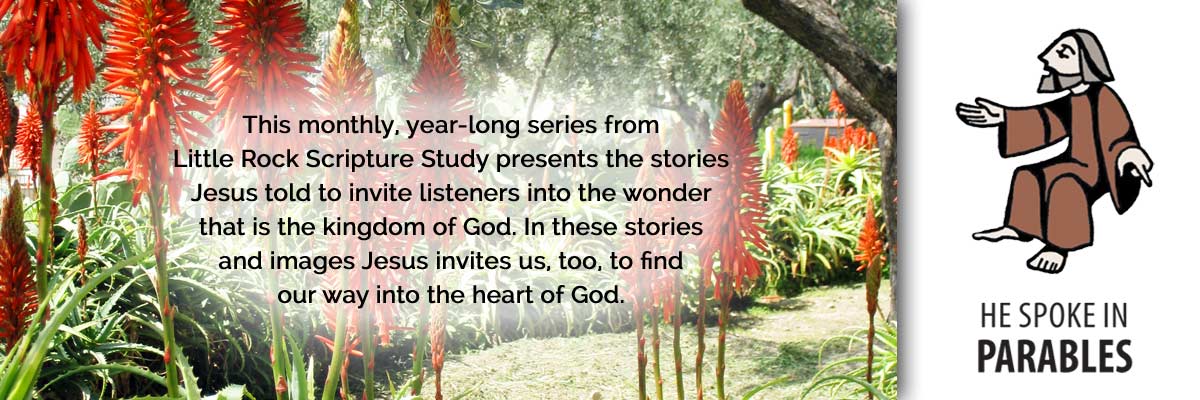Official Website of the
Catholic Diocese of Little Rock
Jesus’ parables sow seeds of the kingdom
Published: January 21, 2015
This is the first column in a 12-part series.
By Clifford Yeary
Associate Director, Little Rock Scripture Study
All four of our canonical Gospels consistently present Jesus as a teacher to whom large crowds listened intently. But it is in Matthew, Mark and Luke (these are the Synoptic Gospels, so-called because of their many similarities) that we encounter Jesus as a storyteller extraordinaire. People flocked to hear him describe God’s exceeding generosity toward sinners of all stripes through stories in the form of parables.
 Jesus’ parables are a special type of story-telling. They employ readily available images from local daily life, but in the briefest manner possible they also upset commonly held understandings of how God relates to the world and the people God calls his own.
Jesus’ parables are a special type of story-telling. They employ readily available images from local daily life, but in the briefest manner possible they also upset commonly held understandings of how God relates to the world and the people God calls his own.
The parable of “The Sower and the Seed” introduces Jesus’ use of parables in each of the Synoptic Gospels. Though they each explain the parable in slightly different ways, the interpretation each evangelist gives it does not set precise limits on how the parable is to be interpreted. Parables, by their very nature, are meant to provoke an internal dialog with anyone who hears one.
There is an intriguing, dynamic power in each of Jesus’ parables. Because Jesus doesn’t tell the crowds how to interpret his parables, we know that their special power lay in the way they would draw those who heard them to ponder the many possibilities for understanding them. The many possibilities might each, in their own way, lead listeners, past and present, closer to welcoming the Kingdom of God they were intended to proclaim.
The classical definition of a parable was provided by C.H. Dodd, a prominent biblical scholar from the last century. A parable is a “metaphor or simile drawn from nature or common life, arresting the hearer by its strangeness and leaving the mind in sufficient doubt about its precise application to tease it into active thought.” Or, to paraphrase Mary Ann Getty Sullivan, a parable describes something new or unknown by comparing it to something familiar, but adding a special twist that is intended to draw an active response from the hearer once they grasp the parable’s possibilities.
In the parable of the sower and the seed (see Mark 4:1-20), the familiar image (at the time) of a farmer casting seeds on ground in hopes of an eventual harvest provokes the interest of those who hear it through several vivid images. First, the sower casts his seeds on all types of ground, rocky, weed infested, even on a path, as well as on fertile soil. Barbara Reid, another noted parable scholar, says this probably wasn’t the way things were done by a knowledgeable farmer, even 2,000 years ago. A farmer would know that it was a waste of precious seed to throw it on a path, or rocky, shallow soil or among growth-choking weeds.
The parable’s account of so much of the misplaced seed never reaching maturity would not have surprised Jesus’ crowds. But that some of the seed would produce grain 30, 60 or even a hundredfold, would have been almost unimaginable. Reid says that the most farmers of the time and place could hope for was a tenfold harvest.
In each Gospel in which this parable occurs (Matthew 13:1-23; Mark 4:1-20; Luke 8:4-15) the disciples ask Jesus why he teaches in parables, and his answer seems to say that it is so the crowds won’t understand him. But probing Jesus’ response more deeply, we can see that Jesus is saying that by using parables, those who don’t take them to heart can have their excuse by claiming not to understand it. They are like the unproductive places in which the seed is sometimes cast.
The parable itself, however, belies any notion that Jesus didn’t want them to understand his teaching. If we are to take Jesus as the sower in the parable and his teaching as the seeds he sows, then, unlike farmers of the day, Jesus freely offers his teaching to everyone, whether or not they attempt to take it to heart. But if they do, the results will be nothing short of miraculous.
The best way to seek understanding of Jesus’ parables is to examine our hearts. What kind of soil are we providing the many seeds God daily sows upon it? If we listen to the parables carefully, pondering what they might be saying to us personally, they just might produce a harvest of 30, 60 or even a hundred fold.
Study Questions
- What are the special features of a parable?
- If you have a favorite Gospel parable, which is it and what makes it your favorite?
- How do you understand the parable of “the Sower and the Seed” (see Matthew 13:1-23; Mark 4:1-20; Luke 8:4-15)?
- What can a person do to prepare fertile soil in their hearts for the sower’s seed?
This article was originally published in Arkansas Catholic Jan. 24, 2015. Copyright Diocese of Little Rock. All rights reserved. This article may be copied or redistributed with acknowledgement and permission of the publisher.




